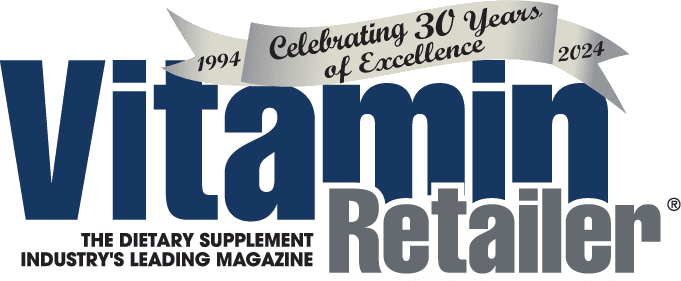Manufacturers are looking toward more comprehensive formulas to address bone, muscle and joint health.
In an era defined by innovation, manufacturers are constantly looking for new ways to solve health issues, such as those pertinent to the bones, muscles and joints. Just as holistic health entails considering a person’s entire being, as opposed to focusing on one illness, companies are beginning to formulate products that target an entire structure of the body, not one portion of it.
This is in response to several factors, including consumer concerns that have developed over the years, product ingredients, market status and research in the field.
Main Concerns
Many individuals with health conditions find themselves consuming numerous pills. In some instances, soluble mixes and other mediums may not be an ideal option for consumers.
However, manufacturers are well aware of this issue and are looking to resolve the matter at hand.
“Innovative delivery systems have addressed the main concerns of bone and joint health consumers,” said Timothy Mount, CN, CCMH, director of education for California-based NeoCell, a manufacturer of collagen-based products. “People have felt ‘pill fatigue’ and are often reluctant to add another tablet to their existing regimen. Offering delicious soft chews, convenient premixed liquids, and powders that can be mixed into a beverage or added to recipes, such as soups, have appealed to customers. For example, NeoCell’s Joint Bursts soft chews exploded onto the joint health scene in 2016 because people love the taste and look forward to taking it. Tablets and capsules will always have their place, but consumer demand is increasing for delivery systems that fit into their lifestyle.” In fact, with the help of retailer input, Joint Bursts made Vitamin Retailer’s list of 2016 Best New Products.
Another idea for innovative bone, joint and muscle health products, according to Stacey Littlefield, chief product formulator with Illinois-based Redd Remedies, entails a systematic approach.
“Redd Remedies creates formulas from a holistic perspective,” said Littlefield. “For example, we offer products in what we call the ‘Body Structure’ category—a category that focuses on the sum total of healthy movement and the body systems involved in movement. These systems include not only cartilage, but also the entire joint structure; the bones that create the skeletal ‘scaffolding’ and the muscles that facilitate movement. Healthy movement and flexibility will not take place if any of these body systems are ignored. Most supplements are focused on single areas or single tissues, for example using only calcium for bone health or glucosamine sulfate for joint health. Only recently, within the past three to five years, have we seen novel and innovative raw materials that provide support for the joint and bones as systems.”
The demographic of consumers who use products pertinent to maintaining bone, muscle and joint health may be apparent to many, but a transformation to other age groups is taking place.
“Pain in joints, back and muscles drive consumers to natural solutions,” noted Trip Campbell, collagen educator for Genacol Canada Corporation Inc. “The aging and the active are prime purchasers. Though not always related to bone, muscle and joints, I should mention aesthetics. Vanity is a powerful driver. Skin tone texture, wrinkles and those wishing for a ‘lifting’ effect are beneficiaries of healthier collagen in the body. Baby Boomers have been a major sector, but now here comes the Millennials.”
However, supplements are only as effective as their ingredients.
Trending Ingredients
Although there may be a customary set of materials that comprise everyday supplement products (calcium to address bone health, for instance), other ingredients are effectively being added to the mix.
“Calcium and vitamin D have been the standard, but now, recent research shows that rosemary, sage, and oregano along with raw bone from New Zealand grass-fed cattle are more effective in addressing the root cause of bone loss and promoting regeneration,” said Dr. Cass Ingram, author of The Bone Building Miracle.
This perspective is based upon Ingram’s way to prevent and even reverse osteoporosis, which involves using food concentrates to not only block bone loss, but rebuild bone mass, as well.
These common materials are certainly trending, as Corey Friese, vice president of product strategy at Illinois-based Vital Proteins LLC, agreed. “Typical ingredients that are used in bone, muscle, or joint health products include calcium, vitamins D and K, glucosamine, chondroitin, as well as new ingredients such as collagen peptides and eggshell membrane that have been gaining traction in the market,” said Friese. “These ingredients are trusted over many others because of their long history and wide range of clinical studies showing effectiveness for joint, muscle and bone health.”
Similarly, Mount was in agreement. In fact, he said he believes that glucosamine and chondroitin helped provide an important piece to the collagen puzzle.
“For years, glucosamine and chondroitin dominated the joint category and calcium the bone category, he noted. “However, a growing body of literature uncovered a key link between both categories—the importance of collagen, the main structural protein for both bone and joint tissue. The discovery of hydrolyzing collagen, which turns the protein into an absorbable and bioactive substance within the body, was a major breakthrough in the 1980s and researchers were able to test a nutrient that previously didn’t exist in the dietary history of humanity. Hydrolyzed collagen acts as a cellular stimulant within bone and joint tissue and not as a building block like calcium. The results of increasing the rate of cellular collagen production using a supplement far exceeded the benefits of traditional bone and joint nutrients, and the industry took notice. Although building block nutrients are still important to make up for dietary insufficiencies, the stimulatory effect of hydrolyzed collagen has become the preferred method of joint and bone health supplements. At NeoCell, we were on the forefront of this new collagen category and have specialized in collagen supplements for over 20 years.”
State of the Market
Currently, being that the Baby Boomer generation is a major consumer of products when it comes to bone, muscle and joint health, one can postulate that generally, as one grows older, bones weaken and become more brittle than what they once were.
As long as people continue to age as expected and barring any medical/technological breakthroughs, there continues to be optimism in regard to the supplement market.
“Bone and joint health continues to be one of the most purchased category of products in the supplement industry, a trend that will likely increase as the Baby Boomer population approaches its golden years,” said Mount. “Quality of life is directly impacted by a person’s mobility, and consumers are searching for products that nourish their joints internally. Two main focuses of this consumer group lead the way—supporting structural issues from age-related joint collagen degeneration and pain or inflammation supplements to relieve joint discomfort.”
In some cases, a major factor that has allowed bone, muscle and joint products to be successful is old age. Older age can sometimes come with its complications, as the body is not what it once was years earlier.
“Bone, muscle and joint health products and supplements have gained prominence as the general population is aging,” added Friese. “Increases in conditions, such as low bone density and muscle mass, injuries or arthritis have caused more attention to be drawn to this area of health.”
Evolving Research
When it comes to properly formulating products, it would not be possible without the plethora of in-depth trials and research that occurs behind the scenes. When it comes to bone, muscle and joint health, the discovery of collagen opened up the door to more developments.
“From rather lackluster treatments for diseases and ominous reduction in collagen production as we age, collagen burst on the scene,” said Campbell. “The recognition of hydrolyzed collagen as an effective agent in bone, muscle and joint building and remodeling is widely accepted and rising rapidly. Genacol is a leader in scientific intellectual contributions in collagen research and product formulation.”
Decades ago, there was less data available to manufacturers, as to supplements’ effectiveness. However, according to Friese, this research has improved significantly.
“Compared to 20 years ago,” noted Friese, “there has been a breadth of research on bone, muscle and joint health and how supplements can possibly benefit them. Research is becoming more targeted and specific, and newer research will need to be completed in order to keep up with an ever-changing market … we’re most interested in randomized double-blind placebo-controlled studies focused on the effectiveness of ingredients in real-world settings. Not only do we prefer these types of studies, but we also consider them the gold standard. With many new supplements on the market, clinical studies have been integral to helping us substantiate claims and increase consumer confidence.”
The intricacy of the human body has guided research.
“Bodies are extremely complex with multiple systems involved in the maintenance and repair of bones, muscles and joints,” said Mount. “As we learned more about these interactions over the past two decades, there was a shift in research from studying individual ingredients to combining substances to create a more comprehensive formula with multiple mechanisms of action. Researchers began to look at other aspects of supplements instead of simply focusing on singular nutritional ‘building blocks’ that compose the physical structure of tissues. Cellular stimulation, hormonal support nutrients, and ratio balancing between minerals and vitamins are just a few of the areas that have been investigated more recently.”
There is no doubt that now is an interesting time to be involved with the vitamin/supplement industry. Collagen and hyaluronic acid, among other products, have contributed to making bone, muscle and joint problems easier to combat for individuals who struggle with these issues and future research may provide new ways and potential solutions for resolving problems. This responsibility is now focusing on Millennials.
“With Millennials as a large segment of the market, companies need to find ways and approaches to expand the joint health market to these younger populations,” said Littlefield. “Studies that show ingredients can maintain joint health and prevent damage are key in reaching this population.” VR
Sidebar:
Research Highlights Efficacy of Oral Enzyme Combination over NSAID for Osteoarthritis
A new peer-reviewed study published in the Journal of Pain Research indicates that Wobenzym, an oral enzyme combination (OEC) containing proteolytic enzymes and bioflavonoid, showed comparable efficacy and a superior tolerability and safety profile—associated with a significantly lower risk of treatment-emergent adverse events—compared to nonselective nonsteroidal anti-inflammatory drug (NSAID) Diclofenac in the treatment of osteoarthritis of the knee.
Osteoarthritis of the knee affects, on average, 25 percent of the general population in the Western world and is the most prevalent cause of pain and locomotor disability worldwide.
Researchers at the Institute of Neurological Sciences, Nuremberg; Interdisciplinary Center for Pain and Palliative Care Medicine, Göppingen; Interdisciplinary Center for Rheumatology and Immunology, Frankfurt; and O. Meany Consultancy, Hamburg, Germany, conducted this meta-analysis of six different double-blind, comparator-controlled intervention studies of Wobenzym versus NSAIDs in osteoarthritis.
In the meta-analysis, the authors report that while treatment with both OECs and NSAIDs resulted in significant and comparable improvements in pain, function and daily living as compared to baseline, OEC treatment resulted in significantly fewer treatment-emergent adverse effects (TEAEs), and virtually no change in key hepatic enzymes, a common side effect of NSAID treatment.
“Our analysis concludes that Wobenzym is a safe and effective alternative to NSAIDs in the management of pain and is better tolerated by patients,” said lead researcher Michael Überall, of the Institute of Neurological Sciences. “We are encouraged by the results, which indicate that a safer alternative exists for patients who may have discontinued NSAID use due to adverse effects and still struggle with the pain of osteoarthritis of the knee.”
In total, researchers evaluated 774 patients from six prospective, randomized, double-blind, parallel-group studies comparing the effects of Wobenzym to diclofenac in subjective pain scores and quality of life measures.
The original studies were sponsored by Mucos Pharma GmbH & Co. KG, Germany, a subsidiary of Atrium Innovations Inc., and all work was conducted independently without influence from the sponsor.
For More Information:
Genacol Canada Corporation Inc., (888) 240-3002
NeoCell Corporation, (800) 346-2922
North American Herb and Spice, (800) 243-5242
Redd Remedies, Inc., (888) 453-5058
Vital Proteins LLC, (224) 544-9110








